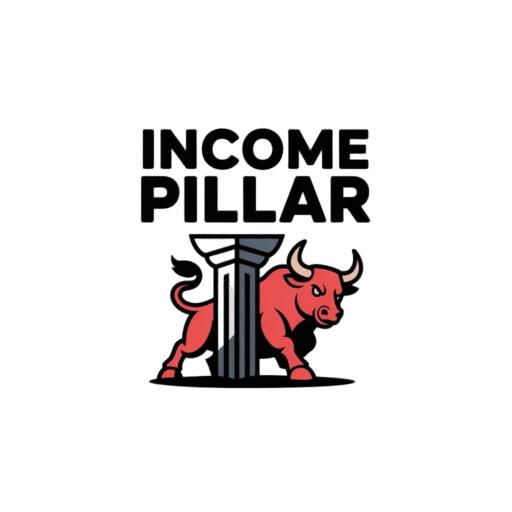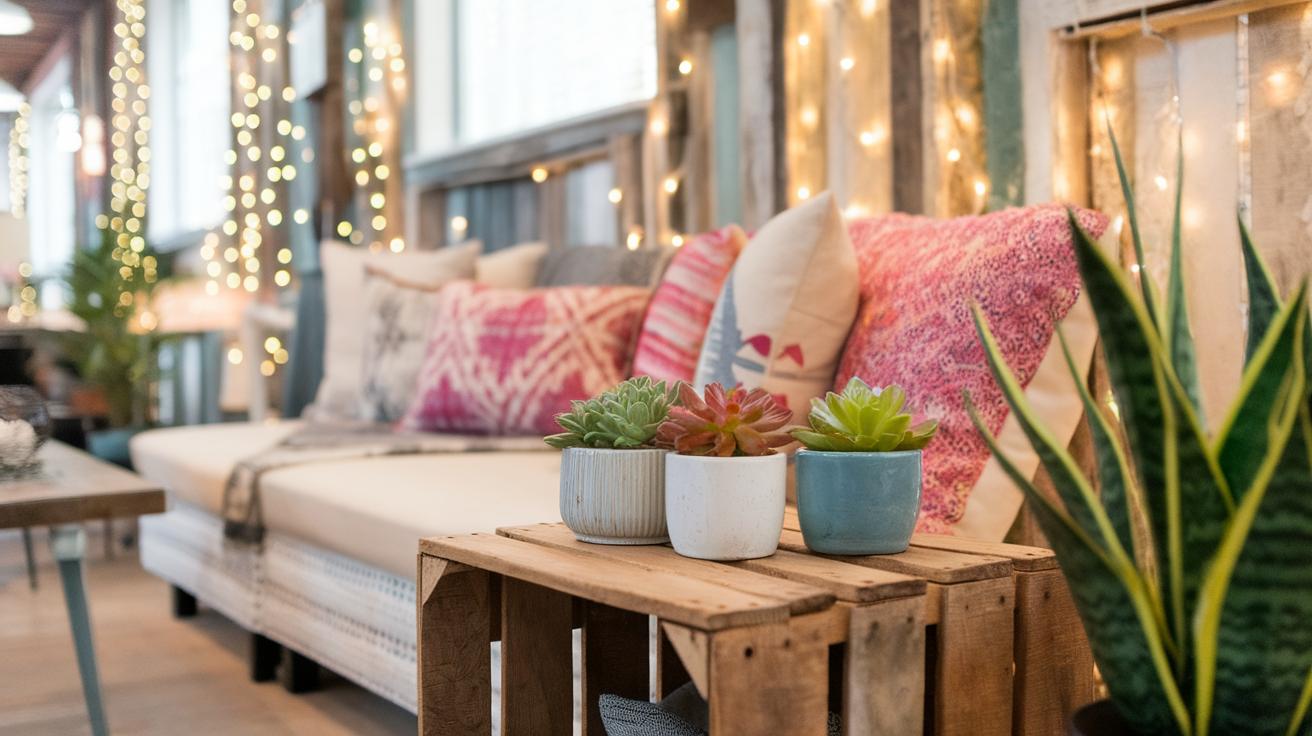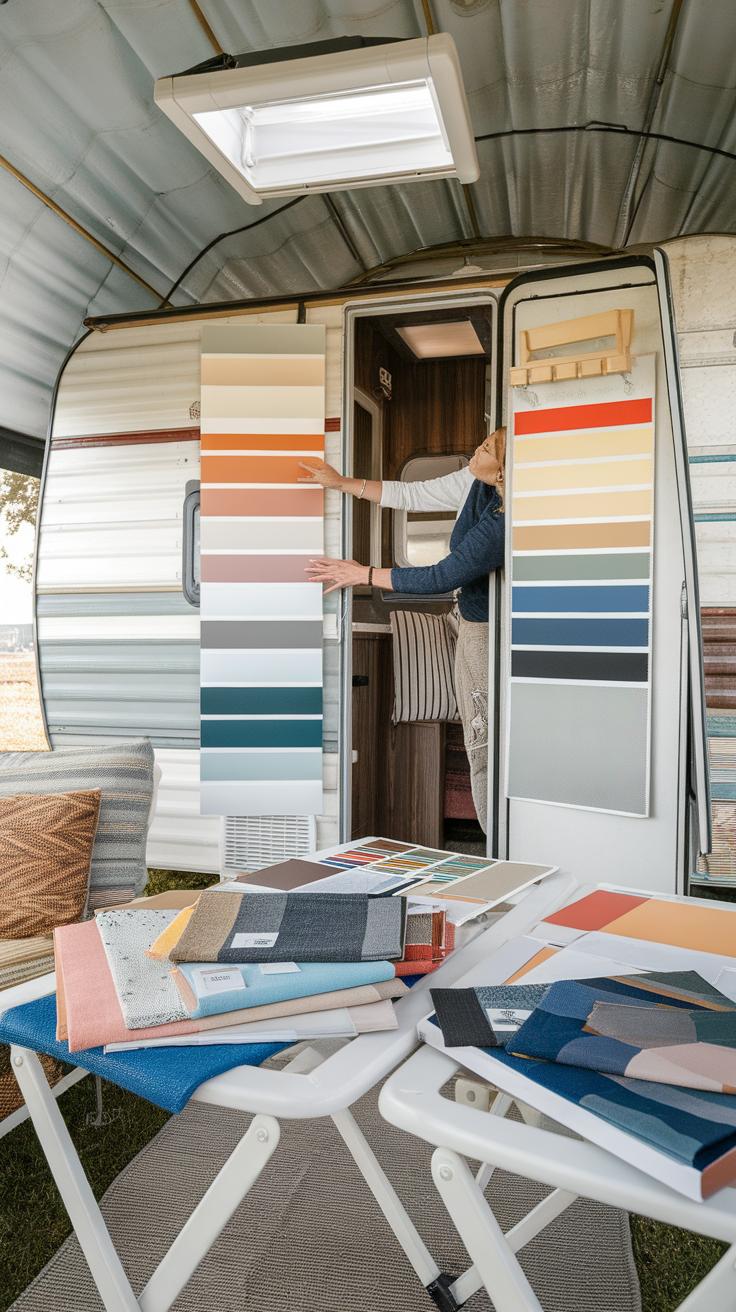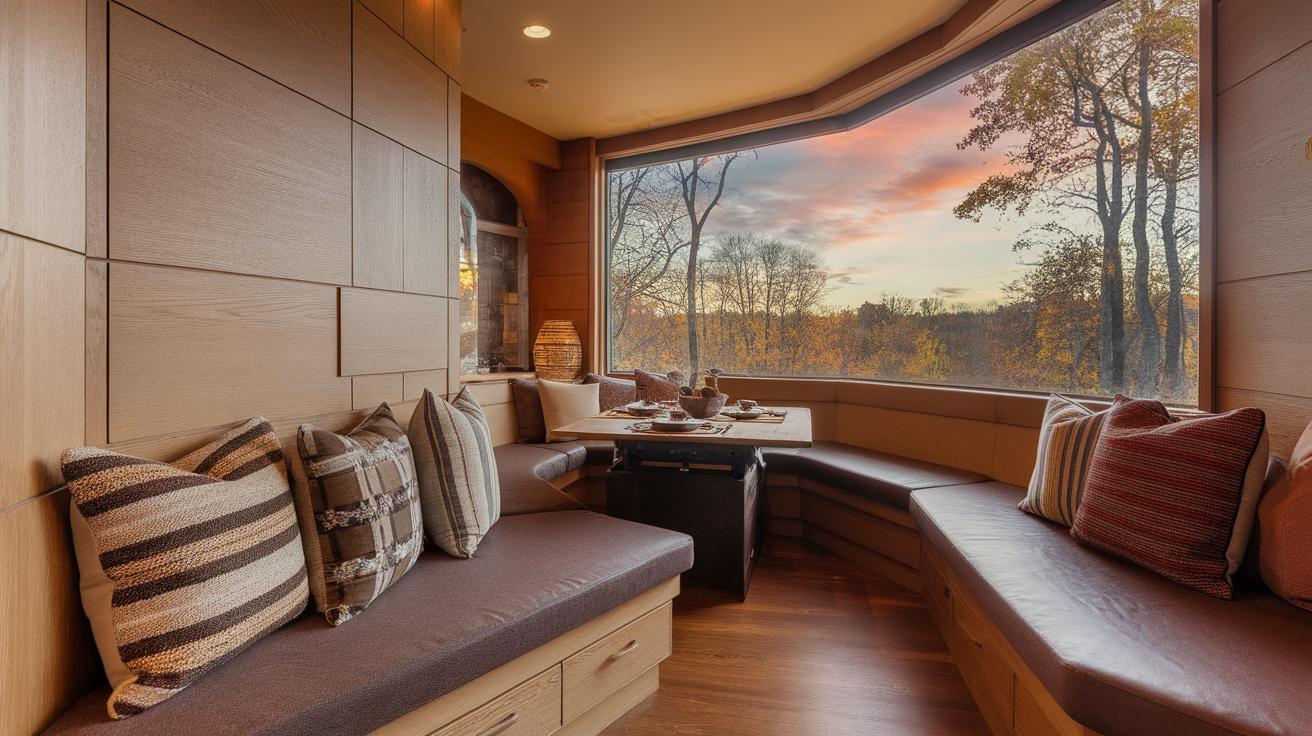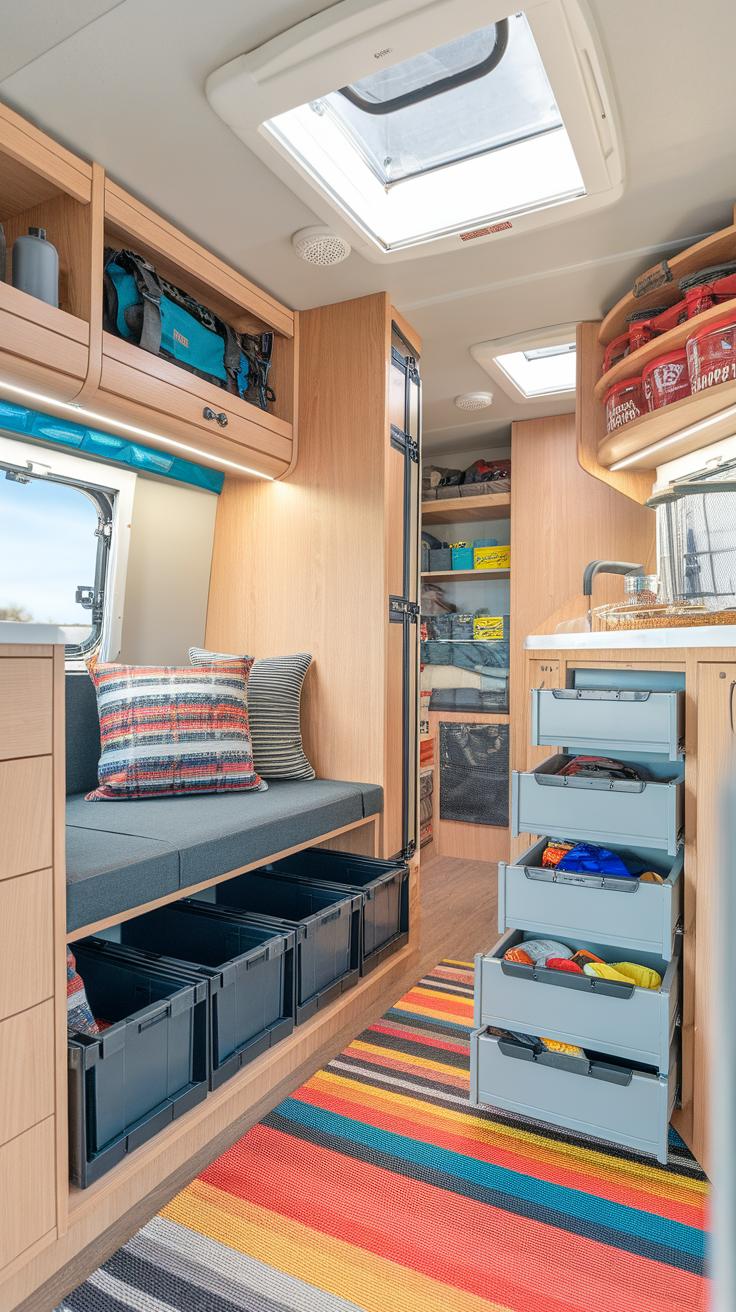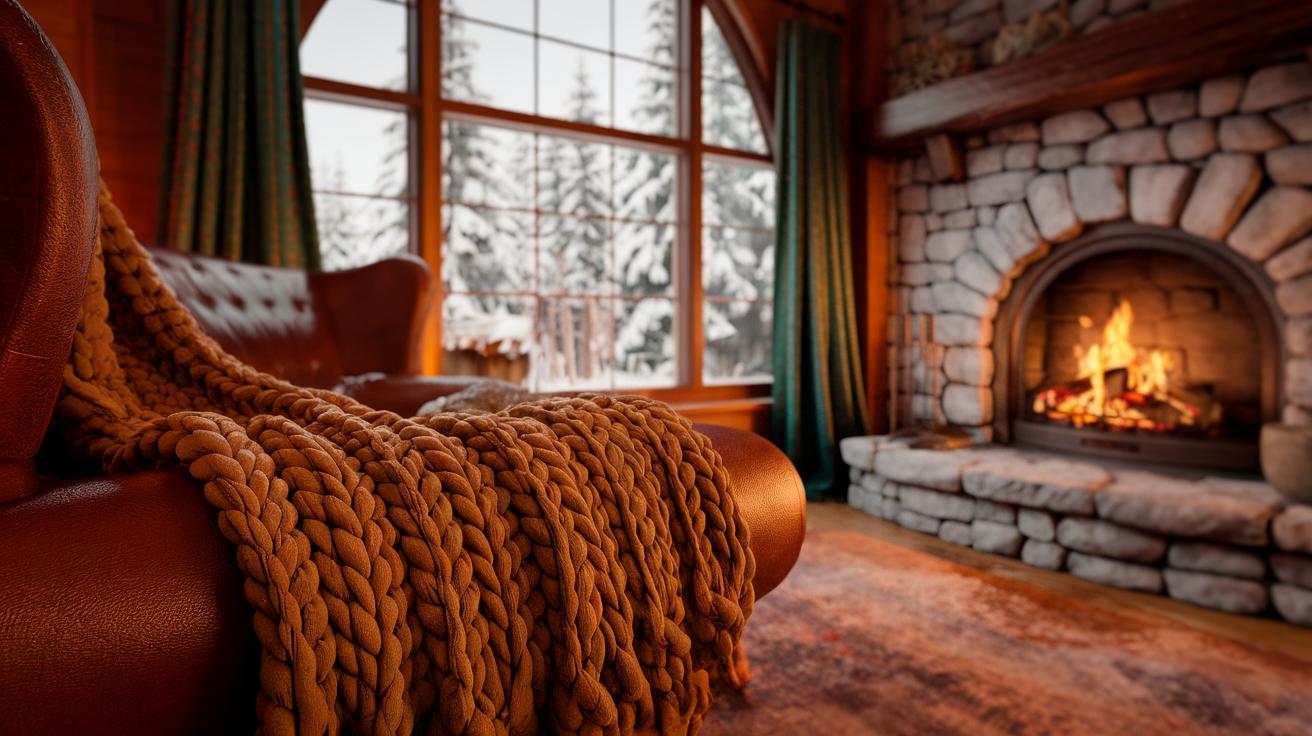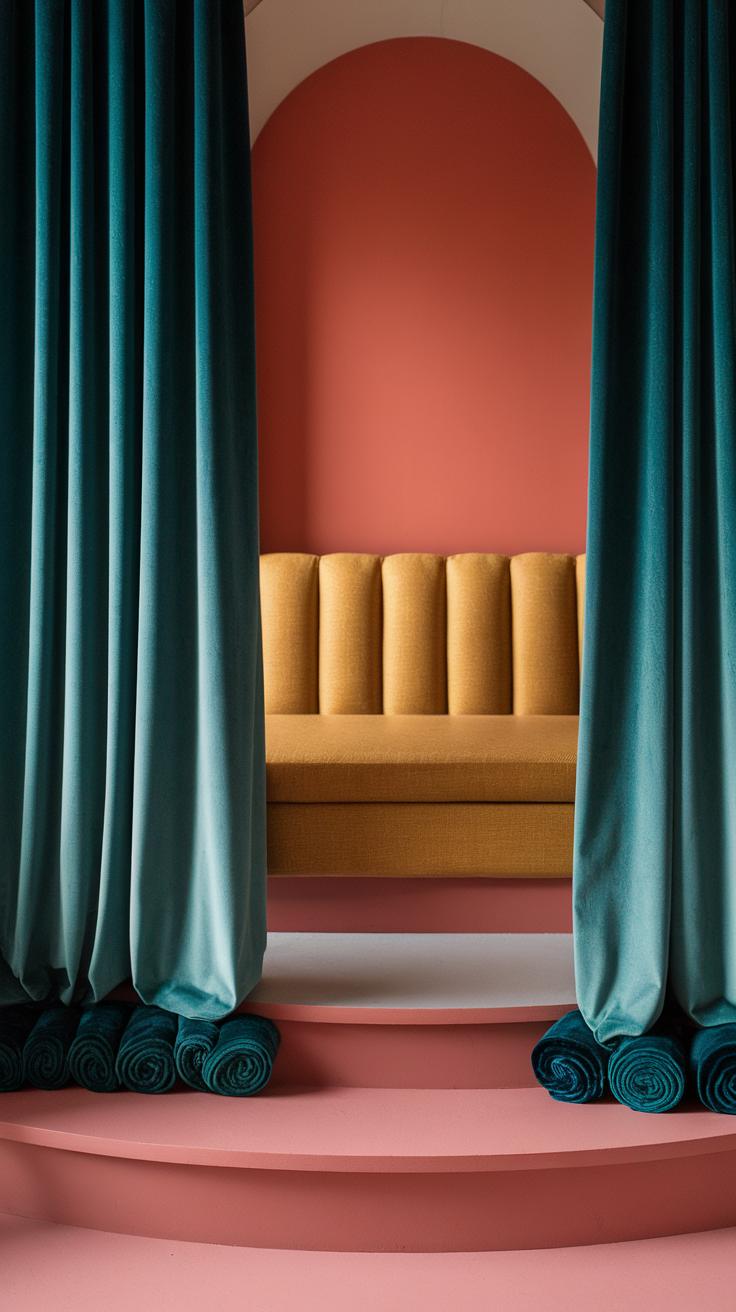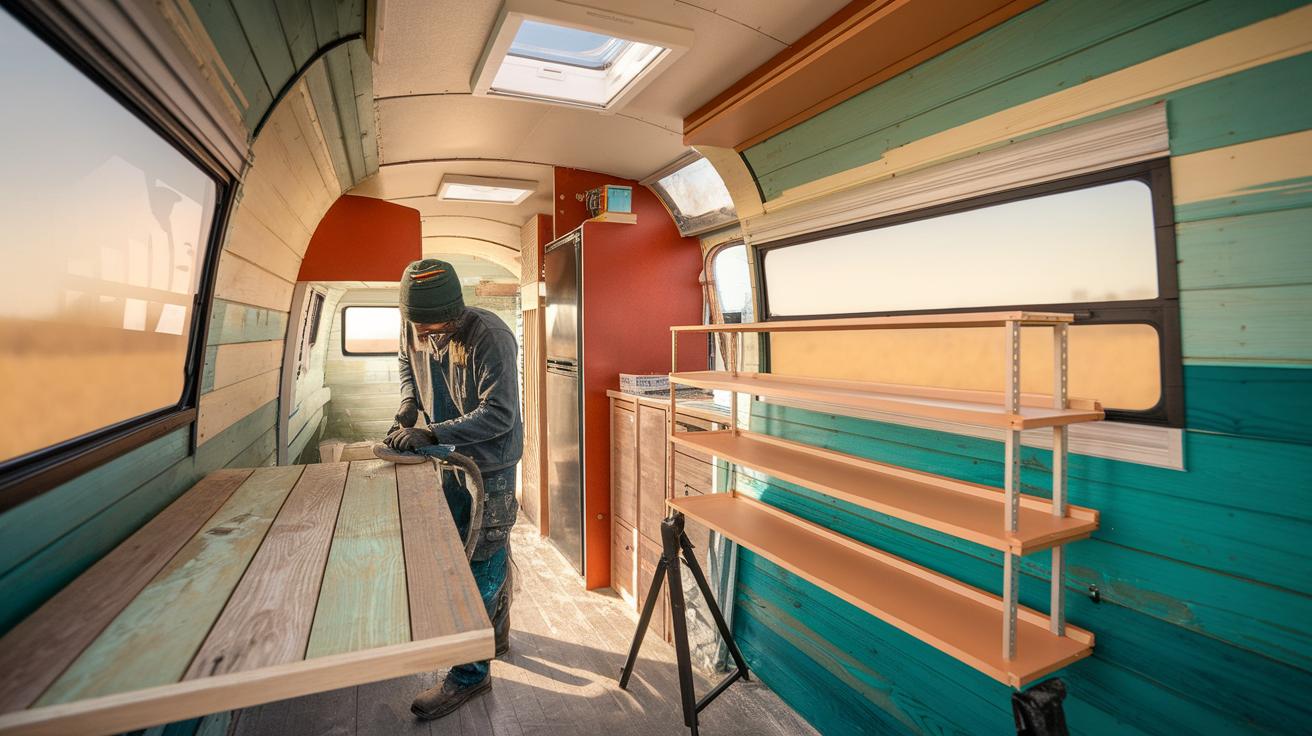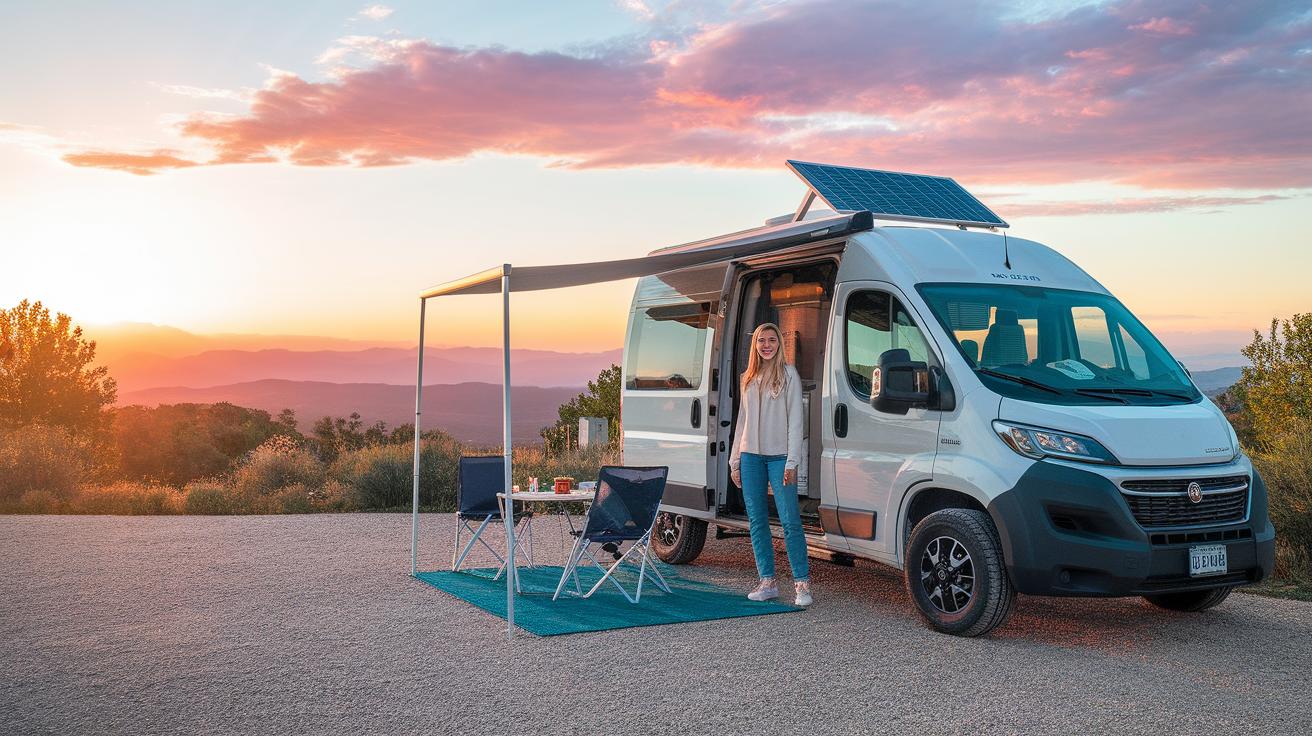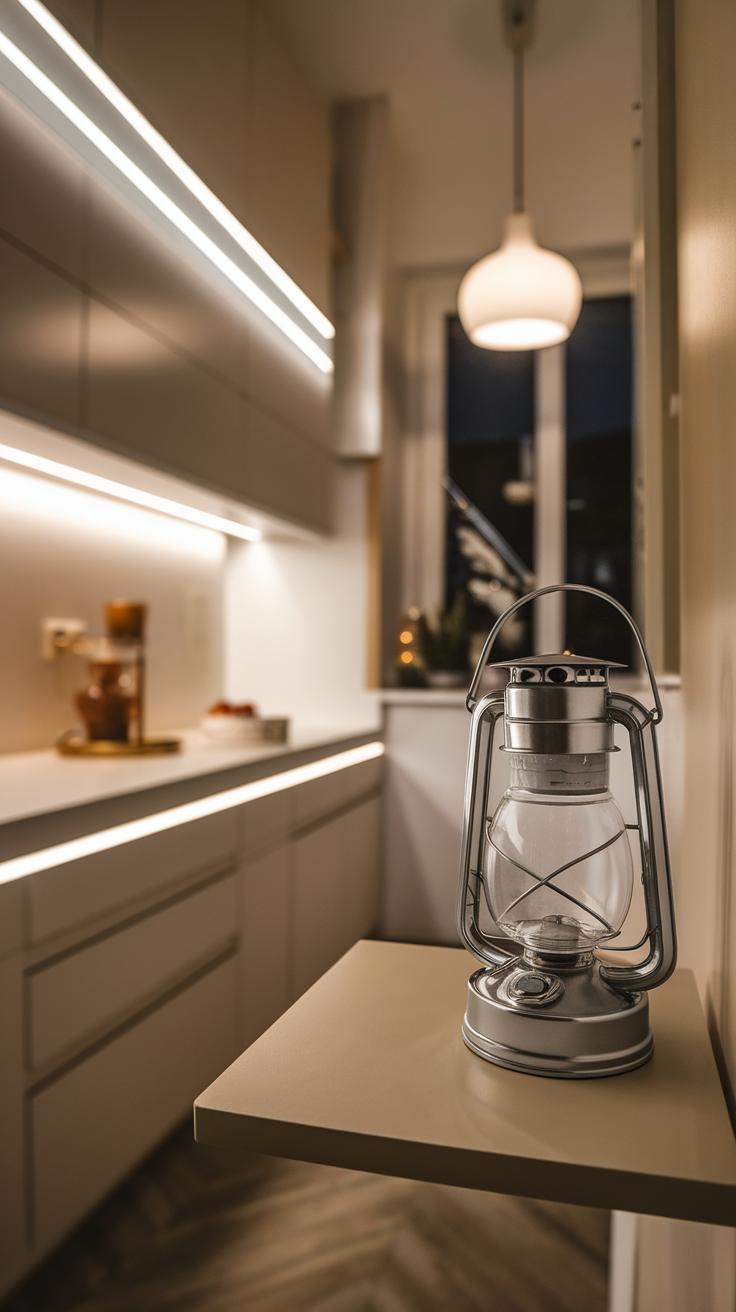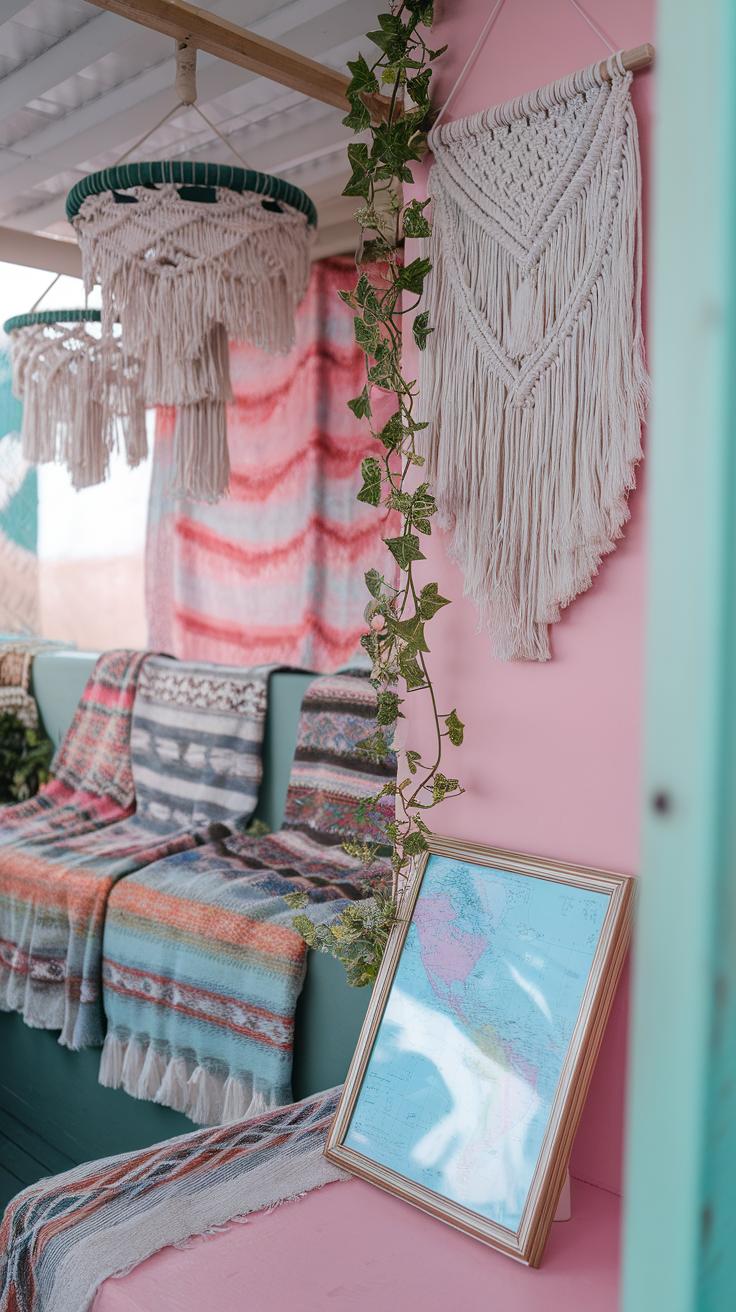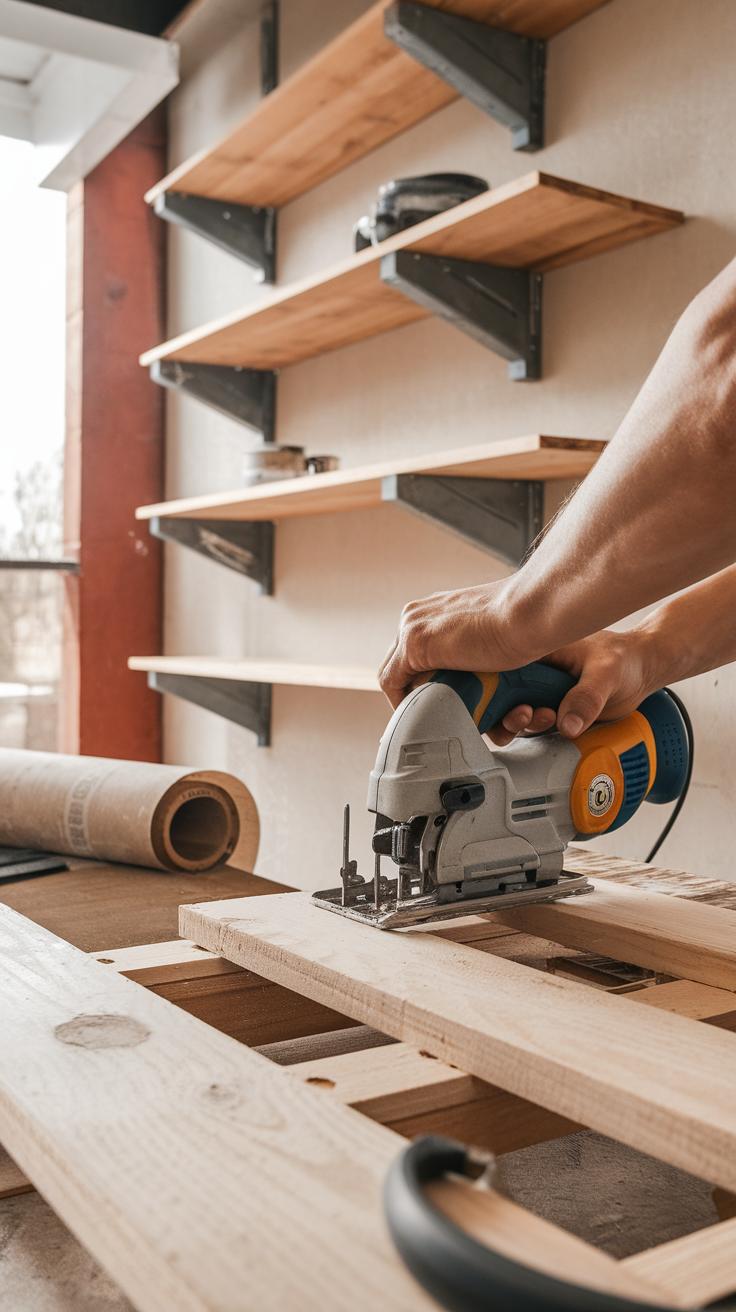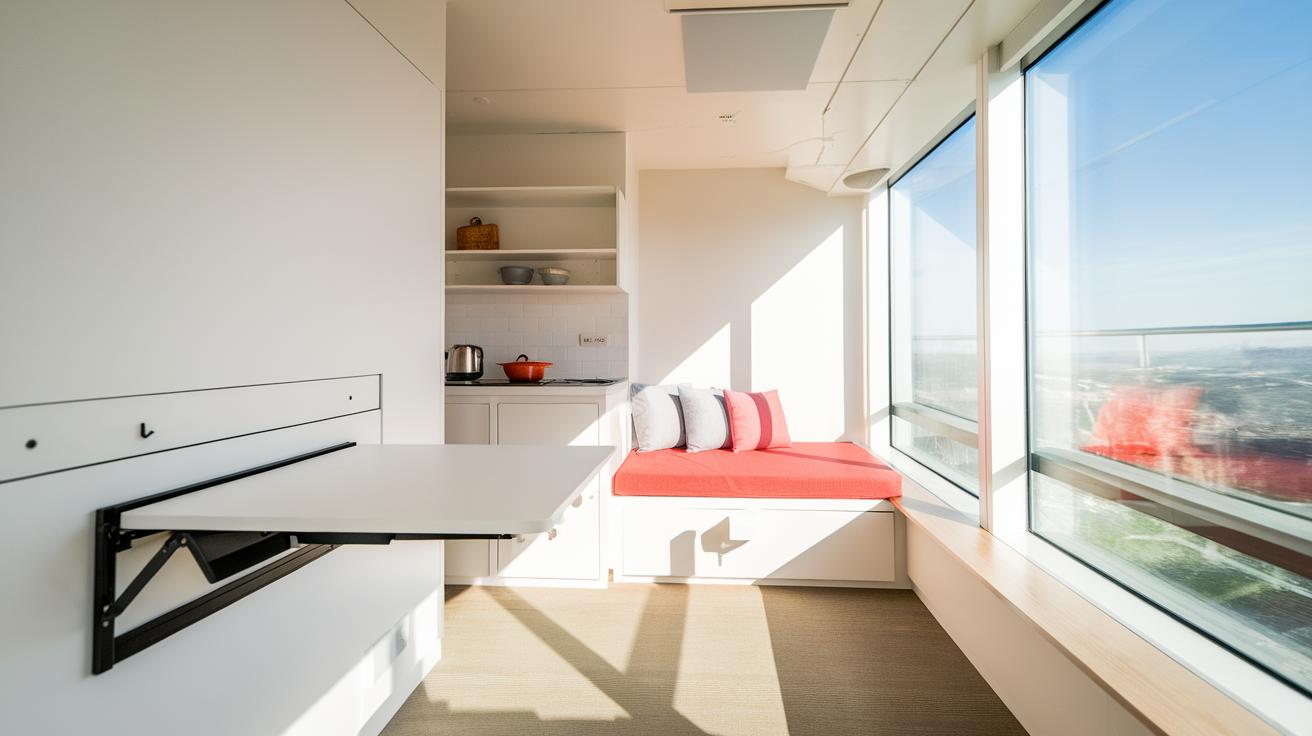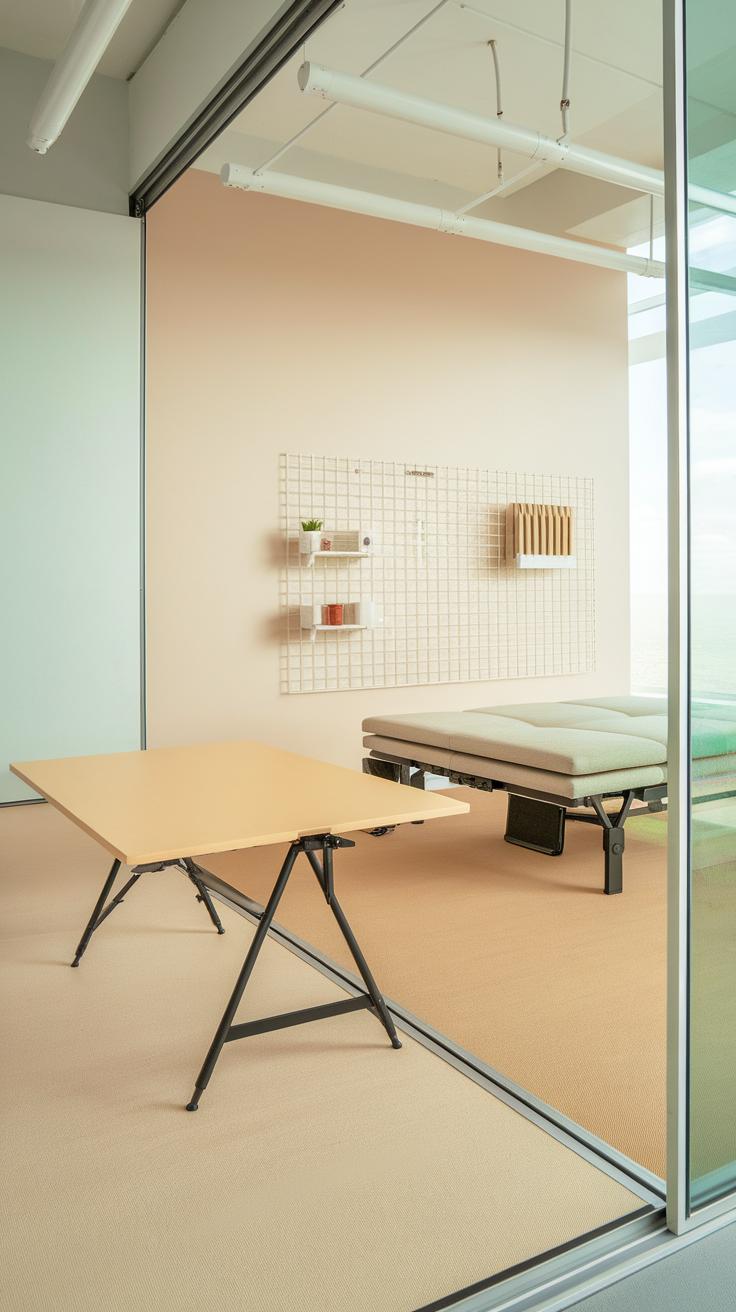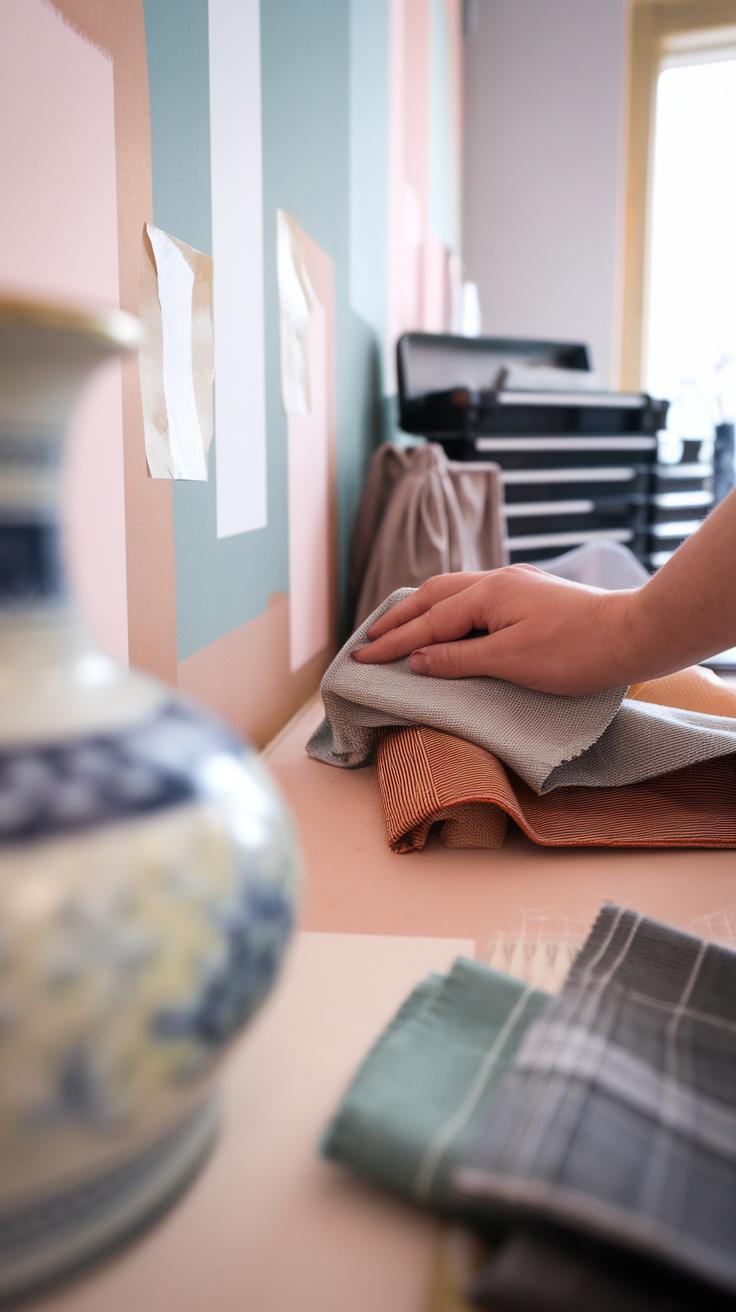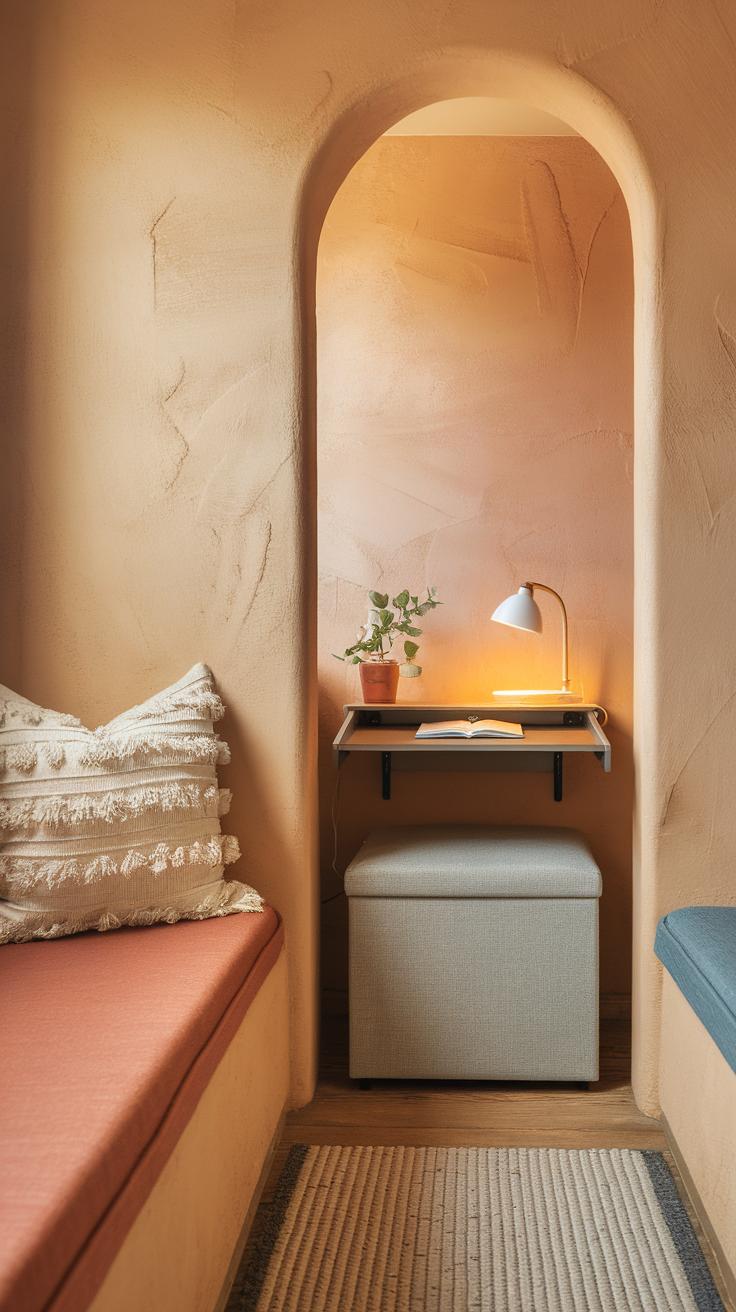Introduction
Your camper is more than a vehicle; it’s your home away from home. Decorating it both functional and cozy sets the stage for your adventures. Personal touches can turn a plain interior into a welcoming space where you want to spend your time. Decorating a camper doesn’t have to be costly or complicated. Simple changes can make a big difference and reflect your unique style.
Think about what makes a space comfortable and efficient for you. How can you maximize small areas? What are some budget-friendly options to add charm? This article offers practical tips and creative ideas to decorate your camper within a budget. Follow this guide and learn ways to use colors, storage, and accessories that fit your needs and personality. Your camper is ready for a fresh look that won’t break the bank.
Planning Your Camper Decoration
Before adding any decorations, take time to plan carefully. Start by looking at the inside space of your camper. Notice which areas get the most use and which feel empty or cluttered. Think about what you need daily, like sleeping, cooking, or storage spots. Identifying these will help you decide where to focus your decorating efforts.
Next, decide on a budget. How much can you spend without creating stress? Setting a clear limit helps you avoid impulse buys and find smart solutions. It will guide your choices when shopping or making DIY projects.
Finally, choose a style that matches who you are while keeping your camper practical. Do you prefer a modern, cozy, or rustic look? Think about colors, fabrics, and decorations that make you comfortable but also fit the camper’s size and shape. Planning helps you personalize the space without clutter or wasted money.
Assessing Space and Setting Priorities
Look closely at your camper’s layout. Where do you spend most time? Is it the sleeping area, kitchen, or seating space? Mark these spots as high priority for your decoration and storage ideas.
Consider how you use the camper. For example, if you travel with kids, you may need more storage for toys and clothes. If you cook often, focus on kitchen organization and easy-to-clean surfaces. Your lifestyle determines which areas deserve more attention.
Think about spots that often become messy. Those may need extra storage or simple decoration to keep things tidy. Deciding what matters most helps you avoid spending on extras that don’t add value to your experience.
Choosing a Style and Budget
Find a decorating style that matches your taste and the camper’s size. Small campers benefit from light colors and simple designs to keep the space open. Larger campers can handle bolder colors and more detail.
Match your style choice with your budget. Make a list of must-have items and nice-to-have items. This list helps you spend first on essentials, then add extras as your budget allows.
Shop smart by searching for sales, using thrift stores, or repurposing household items. Can a plain curtain become a bright focal point with a new fabric? Can simple cushions add comfort and style? Setting a realistic budget makes these choices easier and keeps your camper decorating fun and affordable.
Maximizing Storage and Organization
Keeping your camper tidy makes every trip more enjoyable. Space is tight, so smart storage is key. Multi-purpose furniture works well by combining seating, sleeping, and storage in one piece. For example, benches with hidden compartments let you store blankets or kitchen items while providing a place to sit.
Using vertical space changes how much you can fit in your camper. Hooks, shelves, and magnetic strips on walls or inside cabinet doors hold items without cluttering surfaces. Have you tried hanging baskets or small racks? They’re great for spices, toiletries, or tools. This keeps your counters free for cooking or relaxing.
Multi-Purpose Furniture and Vertical Storage
You might consider folding tables that double as desks or storage boxes that turn into stools. These pieces save valuable floor space. Wall-mounted racks let you keep books, kitchen gadgets, or even plants off counters.
Mount pegboards for utensils or hanging jars. They allow easy access and keep items visible. Closet organizers can hang inside cabinet doors to store cleaning supplies or snacks. How could you use vertical space in your camper that you haven’t thought of yet?
DIY Storage Solutions
Creating your own storage options fits your exact needs and budget. Use wooden crates as stackable shelves or under-bed storage. They cost little and you can paint them to match your camper’s style. Tension rods inside cabinets serve as dividers for lids or cutting boards.
Sew or buy inexpensive fabric bins for drawers or open shelves. Add Velcro strips or command hooks to keep them from sliding on bumpy roads. Repurpose old jars or tins with holes punched in lids to hold utensils or small tools. What household items could you turn into storage today?
Using Colors and Fabrics to Change the Atmosphere
Your camper interior can transform quickly with simple changes in paint, fabrics, and textiles. Paint offers a cost-effective way to brighten your space. Choose paints designed for small spaces that dry quickly and have low odor. Light colors like soft whites, pale blues, or gentle greens create an open feel without overwhelming the room. If repainting seems like too much work, peel-and-stick wallpaper or removable decals provide an easy way to add patterns or color highlights without commitment.
Fabrics bring warmth and personality to your camper. Switch out cushions, curtains, and throws according to seasons or mood. Look for materials that are easy to clean, light in weight, and available at discount stores or online clearance sales. Using slipcovers or no-sew fabric wraps can refresh old upholstery without replacing it.
Do you prefer bold colors or muted tones for a camper? Try small fabric samples on your cushions or walls first to see how they affect the space. This approach saves money and helps you find what really suits your style before making bigger changes.
Choosing Colors Wisely
Color influences how you feel and how spacious your camper seems. Light colors reflect more natural light, making the space appear larger and cleaner. Whites and pastels expand the room visually and keep it feeling fresh. Cool tones like blues and greens relax the mind and work well in sleeping areas.
Think about where you spend most of your time in the camper. Bright accents such as sunny yellows or soft oranges can energize dining and living areas. Avoid very dark colors on large surfaces; they tend to make tiny rooms feel smaller and stuffy.
How do your favorite colors make you feel after a long day? Select palettes that enhance your comfort and mood. If you want to change the look frequently, consider paint made for quick touch-ups or use textiles in those colors for a less permanent option.
Affordable and Removable Fabrics
Choose fabrics that fit your budget and allow for easy updates. Lightweight cotton, linen blends, and polyester fabrics often come at low prices and can be machine washed. Use tension rods or simple hooks for curtains that are easy to take down and swap when needed.
Cushion covers with zippers or Velcro fasteners let you replace or wash them without hassle. Creating no-sew fabric covers from large scarves or blankets is another low-cost way to refresh gear. Monthly thrift store finds can provide unique fabrics to customize your camper space.
Ask yourself which fabric type best suits your lifestyle. Will you need stain-resistant fabrics if you cook often inside? Can you pick fabrics that dry quickly for outdoor adventures? Selecting the right material ensures your camper stays cozy and easy to maintain while reflecting your personal style.
Incorporating Lighting for Comfort and Style
Lighting shapes how you feel in your camper. Choosing the right options helps create a cozy, useful space without spending much. LED strip lights offer bright, low-energy light. You can place them under cabinets, along shelves, or around the ceiling for soft, even lighting. Battery-operated lamps are handy where outlets are limited. They come in various styles and can easily move where you need light most. Using dimmable lights lets you adjust brightness based on activity or mood.
Combining several light sources adds depth and warmth without high electricity use. Consider small clip-on reading lamps or portable lanterns as flexible solutions. Have you checked how much space each light type takes? Opting for slim, multi-purpose lights keeps your camper feeling open. This approach makes your camper both inviting and practical on a budget.
Affordable Lighting Options
LED lights remain a top choice for energy efficiency and longevity. LED strips cost little and are simple to install with adhesive backing. You do not need wires everywhere, which keeps installations neat and affordable. Battery-operated fairy lights or puck lights work well in places without power access. Solar-powered lamps offer free energy by charging outdoors during the day.
Motion-sensor lights can save battery and add safety using light only when needed. Recharging options like USB-powered lamps allow using power banks commonly used for phones. How could you mix these types to cover your camper’s main spots affordably? Experiment with different combinations to find balance between light quality and energy use.
Enhancing Natural Light
Natural light brightens your camper and reduces the need for artificial lighting during the day. Positioning mirrors opposite windows reflects daylight deeper inside. Choose lightweight or thin blinds and curtains that open fully to maximize window exposure. Consider replacing heavy drapes with light fabric sheers that soften sunlight without blocking it.
Rearranging furniture near windows can remove barriers to light flow. Placing seating or tables close to windows invites more daylight use. Could removing or shortening bulky window treatments add space and light? If possible, clean windows regularly to keep light clear. Small changes like these brighten your camper without adding cost or energy demands.
Personalizing with Accessories and Decorations
Choosing the right accessories can make your camper feel like home without crowding the space or breaking your budget. Focus on small items that tell your story or serve a purpose. A favorite travel mug, a cozy throw blanket, or a set of patterned cushions can bring warmth and personality. Think about what you use daily and what sparks joy or comfort during your trips.
When placing decorations, keep functionality in mind. Use wall hooks to hang lightweight frames or hang a small, meaningful tapestry where it won’t block storage. You can also mix in practical items, like stylish baskets or trays, to organize while decorating. Finding pieces that do double duty saves space and money.
Choosing Meaningful Accessories
Select accessories that hold personal meaning or add convenience. For example, bring souvenirs from favorite trips to display in shadow boxes or use handmade pottery from local artists as planters. These items give the camper character and a sense of connection to places you cherish.
Choose colors and styles that blend with your camper’s interior. A few well-chosen accessories will avoid clutter and keep the space feeling open. Ask yourself which objects inspire you and how they fit with your camper’s function. Prioritizing meaningful over numerous pieces keeps your camper inviting and practical.
Creative Decor Ideas on a Budget
Creating your own decor adds personality without high costs. Use empty glass jars as candle holders or paint old tins to serve as storage containers. Make a photo collage with pictures printed at home and display it on a small corkboard. These simple projects cost little yet add unique touches.
Nature can offer great inspiration. Collect smooth stones, pinecones, or pressed leaves to feature in a clear bowl or frame. You can also sew simple pillow covers using leftover fabric scraps to refresh your seating area. Have you considered updating your curtains or placemats with fabric paint? Small, creative changes make your camper feel fresh and personal without expensive buys.
DIY Projects for Camper Decor
You can boost your camper’s personality and usefulness with simple do-it-yourself projects. Start with basic tools like a screwdriver, hammer, and measuring tape. These tools help you build or fix items without needing fancy equipment. Using low-cost materials such as plywood, fabric scraps, or recycled jars helps keep expenses low. For example, create a small wooden shelf to hold spices or toiletries, making your space more organized and personal. Crafting your own storage bins with cardboard and fabric gives your camper charm and cuts clutter. What small change could make your daily routine easier while traveling? A homemade message board or a custom pegboard for hanging keys and gadgets adds function and style. These projects give you control over your space without breaking your budget.
Easy DIY Furniture Upgrades
Transform your camper’s furniture using simple upgrades that add style and improve function. Swap out old drawer pulls with colorful knobs for a fresh look. Use sandpaper and paint to brighten up worn tables or chairs. Adding adhesive shelf liners can protect surfaces while updating patterns cheaply. Try reupholstering cushions with fabric you love, giving your seats a new feel without buying new furniture. Adding small caster wheels to heavy furniture pieces makes moving easier. Think about what frustrates you about your current furniture. Could extra hooks or brackets make storage more accessible? These small changes improve how you use your camper and keep spending in check.
Crafting Decorative Elements
Make tailored decorative items that suit your camper’s style and space. Use fabric remnants to sew cushions or curtains that fit perfectly. Create wall art by framing travel photos or nature prints printed on inexpensive paper. Use washi tape or paint to customize plain containers for pencils or utensils. Try crafting a simple hanging organizer with fabric and Velcro strips for small items. Could you turn old maps into a colorful mural on your wall? Handmade items add personal touches and unique charm without taking up much room or money. These crafts let you enjoy your camper with pieces that feel truly yours.
Smart Use of Space with Modular Designs
Using modular furniture in your camper lets you adjust the space exactly how you need it. Pieces that fit together or separate easily can turn a small area into a sleeping spot, a dining area, or extra storage in seconds. This flexibility helps you make the most of limited space without feeling cramped.
Modular designs allow you to change the layout depending on your plans. Need more room for guests? Rearrange the seating. Want a workspace? Shift the shelving units. This adaptability keeps your camper organized and comfortable, no matter where the road takes you. What problems have you faced with fixed furniture in your camper? Modular options could solve them.
Benefits of Modular Furniture
Modular furniture saves space by fitting multiple roles in one piece. A bench that opens for storage or a table that folds down creates room for other activities. These pieces suit small camper interiors where every inch counts.
Since you can move or reconfigure modular furniture quickly, you avoid clutter and wasted space. You gain more freedom to design your camper for sleeping, cooking, or relaxing. Imagine converting a sofa into a bed without extra gear. That’s the power of modular furniture.
Adjustable and Moveable Decor Tips
Choose curtains, cushions, and wall art that you can easily swap or move around. Use hooks, magnets, or Velcro strips to attach decorations. This way, you can change your camper’s style or function without tools or damage.
Organize storage in baskets or bins you can carry outside or rearrange inside. Items like foldable trays, clip-on lamps, and portable shelves help you shift from cooking space to a work area. Have you tried using peel-and-stick hooks or removable tape? These simple tools make your camper easy to personalize and tidy.
Maintaining and Updating Your Camper Decor Over Time
Regular Maintenance Tips
Keep your camper looking fresh by cleaning surfaces often. Wipe down countertops, cabinets, and windows with mild cleaners to avoid buildup that damages finishes. Check fabrics for stains or tears and address them quickly to prevent further wear.
Inspect seals on windows and doors regularly to stop moisture from creeping in. Fix small gaps with weatherstripping or sealant to protect the interior from water damage and mold. Tighten screws and fix loose handles to maintain a sturdy, safe space.
Use slipcovers or removable fabric covers on cushions and chairs. These are easy to wash and replace, extending the life of your furniture without spending much. Small repairs and consistent cleaning help your camper remain inviting and comfy while saving money over time.
Seasonal and Trend Updates
Change your camper’s look by switching out small items often. Swap throw pillows with new covers that match the season or a current color trend. Choose lightweight curtains you can easily tuck away or swap for a fresh design.
Keep a collection of inexpensive rugs or mats to update the floor’s feel. Look for sales or thrift finds that add pattern or texture without breaking your budget. Consider simple wall decals or removable wallpaper for a quick style lift without permanent changes.
Ask yourself what small touch would brighten your space or boost your mood during your next trip. Could new lighting, a few plants, or changed artwork make your camper feel like a new home? Small updates keep your camper feeling fresh and ready for any adventure.
Balancing Comfort and Practicality in Decorating
Creating a camper space that feels like home while standing up to travel demands careful choices. You want a space where you can relax after a day on the road, but also one that stays tidy and functional. Durable materials protect against spills and bumps, so aim for fabrics like microfiber or marine-grade vinyl. These materials resist stains and dry quickly, making cleaning easier on your trips.
When choosing furniture, look for lightweight, foldable pieces that hold up to constant movement. Pieces with hidden storage help keep clutter out of sight. Consider cushions with removable, washable covers for easy care. Think about how much space you really use daily and avoid crowding your camper with extras that block pathways.
Ask yourself: Can I easily clean this fabric? Will this chair stay stable while driving? Does this arrangement allow smooth movement? Focus on simplicity and durability. When your camper feels good and works well, every trip becomes more enjoyable.
Selecting Durable Materials
Fabrics inside your camper must handle rough use and weather changes. Look for synthetic options like nylon or polyester blends. They resist water and don’t fade quickly. Avoid delicate cotton or linen, which can stain or wear out fast. Upholstery designed for boats or outdoor use is a smart pick because it built for moisture and sun.
Choose furniture made from solid wood, metal, or heavy-duty plastics. These will survive bumps on the road better than particle board. When picking decor items, opt for items made with sturdy materials such as metal hooks or shatterproof containers. These last longer and won’t easily break or fray.
Have you checked how easy the material is to wipe down? Selecting smooth surfaces means less time cleaning. Durable doesn’t have to mean dull. Look for colors and patterns that hide dirt and wear. This keeps your camper looking fresh without a lot of upkeep.
Arranging for Practical Living
Space in a camper is tight. You need to arrange everything for comfort and easy movement. Start by keeping pathways clear. Place furniture where it won’t block doors or cabinets. Use corners and walls for storage racks or shelves to free up floor space.
Multi-purpose furniture helps. A bench can double as storage, or a table can fold down when not in use. Store items you use often within reach, but keep seasonal or less-used things tucked away. Containers or baskets help you organize efficiently.
Consider your daily routine inside the camper. Does your layout allow quick access to kitchen tools or bedding? Can you sit comfortably without bumping into something? You want a setup that supports your needs, not creates obstacles.
Could rearranging your furniture make your space feel larger? Simple shifts often improve flow and ease of use. A well-planned layout saves time and stress during your travels.
Conclusions
You have many options to improve your camper’s interior without spending much. Practical storage solutions, clever use of colors, and personalized decor can make your space inviting and functional. Thoughtful planning helps avoid clutter and maximizes comfort. Start with simple projects and build on them as you find what works best.
Enjoy the process of creating a space that suits your lifestyle. Your camper should feel like your own retreat on the road. Keep in mind that small changes have a big impact. You can refresh your camper anytime with creativity and smart budgeting. Your camper journey begins with a space you love.

